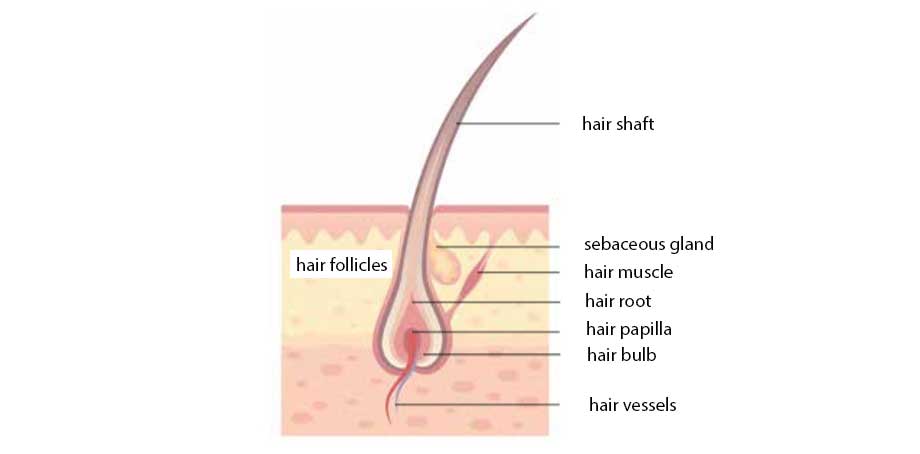Hair care – an expression of personality care
13
Dec
![[Translate to English:] hair care [Translate to English:] hair care](/fileadmin/user_upload/ALL_BLOG/Kategorie_Trend/Haarpflege_iStock-884113288.jpg)
Hair care is a part of our daily care routine and an important field of cosmetics. Beautiful hair is one of man's natural adornments and stands for attractiveness, beauty and health. Hair performs no vital functions, but it is a sign of individualism and is one of the most important non-verbal forms of communication. Hair can, for example, express socially desirable features of one's personality and leave a lasting impression on others, who will then form their own conclusions about our character, our attitudes and our state of health.
Healthy-looking hair does not come without effort, rather it depends on our lifestyle and how we look after our hair. That means hair care is also an expression of our personality. For most people, hair is central to how they view themselves and how they want to be seen by others, whereby hair can influence one's own personality development and the quality of interpersonal relations. Accordingly, as the subjectively perceived unkemptness of someone's hair increases, so, too, does the overall negative assessment of that person.
In this first blog post on the topic of hair care, we focus on the structure of hair and the range of actions that modern hair technologies offer. The next blog post will then go into the specific care needs of hair.
Structure and growth
Hairs are long horn fibres that consist mainly of keratin. Hair undergoes a growth cycle, at the end of which it falls out and is replaced by new hair.
Structure of hair
The human hair comprises the hair shaft, the hair root and the hair bulb. The hair root anchors the hair into the skin and ends in a thickened base, which is the hair bulb. The hair shaft resides in a tubular invagination of the epidermis, the hair follicle, at the bottom of which the hair is formed in the hair root.

The hair shaft residing on the skin surface is roughly built up in three layers:
The cuticle, or cuticula, is the outermost layer. It consists of six to ten layers of flat, overlapping, keratinized cells. The cuticle reflects the hair's state of health: In healthy hair, the cuticle lies flat, forming a smooth surface. The light is then optimally reflected, giving the hair a healthy shine.
The cortex (L. "bark") is a fibrous layer that makes up 80% of the hair. The cortex consists of fibre bundles each made up of a large number of very fine keratin fibres, called fibrils. The cell membrane complex, which can be imagined as a kind of intercellular cement, creates the bond between the individual cells. The tear strength and elasticity of hair are determined by this bonding.
Deep within the hair is the medulla, or medullary channel. This consists of cell migrations, degradation products from the cortex cells and fats.
Hair growth cycle
A hair never grows at a uniform rate, rather always in cycles of alternating rest, growth and regression phases.
Anagen (growth) phase: During this growth phase, a new hair root forms, whereby the production of a new hair begins. For head hair, this phase lasts around two to six years, and about 85–90% of hair is in this phase at a given time.
Catagen (transition) phase: This transition phase marks the beginning of hair shedding. In this phase, which lasts around two weeks, the hair root cells degenerate and the hair follicle becomes inactive (2). The hair loosens itself from the papilla and stops growing. About 1% of all hair is in this phase at a given time.
Telogen (dormant) phase: During this end phase, the hair papilla and hair follicle regenerate. Cell division starts again, whereby new hair is formed. This phase of the hair cycle lasts two to four months.
Range of actions
Modern hair care technologies work either
on the hair shaft for:
- shiny, soft and smooth hair that is easier to comb
- repairing damaged hair
- protecting against harmful environmental influences
on the scalp for:
- anti-dandruff action
- anti-seborrhoea action (overproduction of hair oils by sebaceous glands)
- soothing the scalp
or on the hair follicle for:
- vitality
- anti-hair-loss action
- anti-aging
Literature:
- Doris Lier, Ralph M. Trüeb: Das Haar im Wandel der Zeit

Claudia Dür
Social Media Manager
Stories - Nature - Movement. These three words have the greatest meaning in my life.
As a passionate communicator, I am responsible for social media at IMPAG. In addition, I write various contents for our communication activities in the area of personal care. I love stories, constructive exchange, open discussions and teamwork. In my spare time you meet me and my family always in motion, be it biking, climbing and hiking in the mountains or surfing in the waves of the Atlantic.


Comments are disabled for this post.